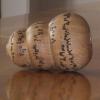higgs
If it looks like the Higgs... and it smells like the Higgs... have we finally found it? Most physicists agree it's safe to say we've finally observed the elusive Higgs boson. And perhaps that is not all....
CERN's Large Hadron Collider is one of the few scientific
experiments to sparked wide-spread media coverage, particularly with the 2012 announcement of the discovery of the long-sought Higgs boson. So what really goes on at CERN and why the hubbub about the Large Hadron Collider, known as the LHC?
On the face of it, an artist and a theoretical physicist might seem an unlikely pairing. But Turner Prize-winning sculptor Grenville Davey and string theorist David Berman's collaboration is producing beautiful, thought-provoking work inspired by the fundamental structure of the Universe. Julia Hawkins interviewed them to find out more about how the Higgs boson and T-duality are giving rise to art.
In the first part of this article we explored Landau's theory of phase transitions in materials such as magnets. We now go on to see how this theory formed the basis of the Higgs mechanism, which postulates the existence of the mysterious Higgs boson and explains how the particles that make up our Universe came to have mass.
